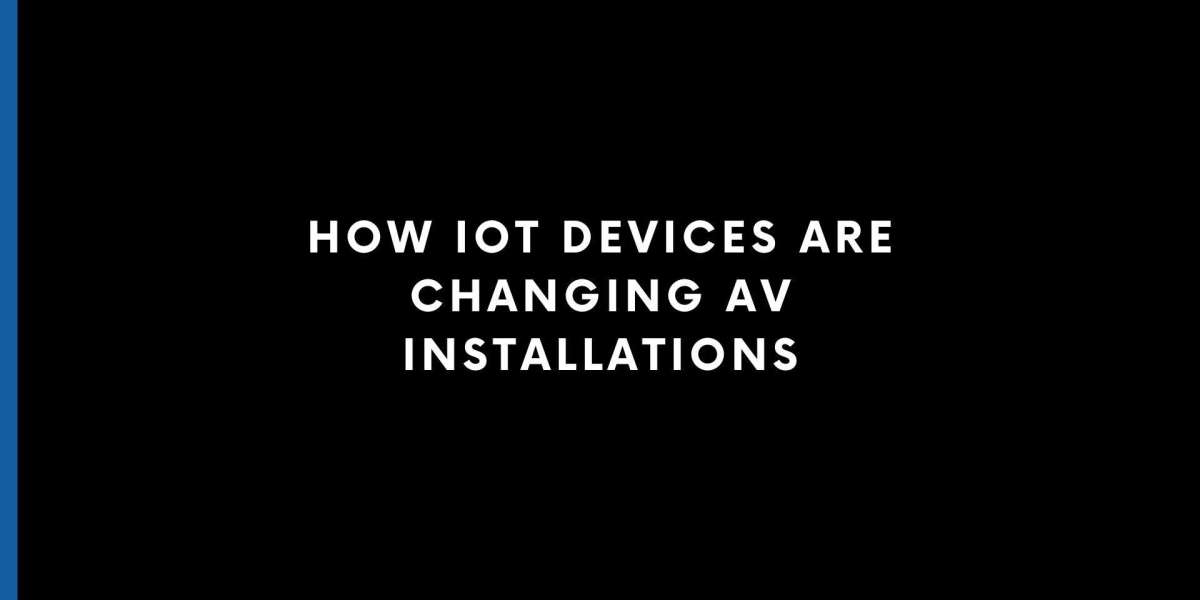As the AV industry continues to evolve, XTEN-AV is at the forefront of redefining how professionals design and manage audio visual systems. With increasing demand for intelligent and adaptive solutions, XTEN-AV offers integrators tools that incorporate Internet of Things or IoT capabilities into AV installations with ease and efficiency. From smart classrooms and connected conference rooms to intelligent home entertainment systems, XTEN-AV simplifies and automates AV system installation to meet the demands of modern users.
Introduction: The Age of Connected Devices
In recent years, IoT technology has dramatically changed how people interact with devices. From thermostats that learn your preferences to surveillance cameras that send alerts to your phone, IoT has become part of our daily lives. This shift has extended into AV installations, where traditional systems are being upgraded with intelligent, networked devices that offer control, automation, and data-driven performance monitoring. These smart devices are transforming AV systems into dynamic ecosystems that deliver a more seamless user experience.
The Role of IoT in AV Installations
IoT devices introduce a new layer of functionality in AV environments by allowing devices to communicate across platforms and networks. For instance, AV components such as displays, speakers, microphones, cameras, and lighting can now be integrated with environmental sensors, scheduling systems, and control software. This integration ensures that the AV setup responds intelligently to the needs of the users.
In educational institutions, IoT-enabled AV systems automatically adjust lighting and sound levels depending on occupancy or the time of day. In corporate environments, meeting rooms equipped with IoT sensors can detect participant presence and activate displays and conference tools accordingly. This type of automation not only boosts convenience but also saves energy and improves operational efficiency.
Key Benefits of Integrating IoT in AV Installations
Automation and Efficiency: IoT enables automated workflows. For instance, when a room is scheduled for a meeting, the lights turn on, the projector powers up, and the video conferencing system connects — all without human intervention.
Remote Monitoring and Maintenance: IoT devices offer real-time performance data. AV professionals can monitor the health and usage of devices remotely, reducing the need for physical inspections and enabling predictive maintenance.
Energy Optimization: By integrating with environmental sensors, AV systems can power down unused components, adjust brightness levels, and maintain energy-efficient settings based on occupancy and activity.
Enhanced User Experience: IoT ensures that the AV environment is responsive and intuitive. From automatic volume adjustments to personalized content delivery, users benefit from a smarter interaction with the system.
Data Collection and Analytics: With IoT, AV systems can track usage patterns and performance metrics, allowing organizations to make informed decisions on upgrades, resource allocation, and user training.
Challenges in IoT-Driven AV Installations
While the benefits are numerous, there are also challenges that come with integrating IoT into AV installations:
Security Concerns: Connected devices increase the attack surface for potential cyber threats. Ensuring encrypted communication and network segmentation is vital.
Compatibility Issues: Not all AV equipment is natively compatible with IoT protocols. Integrators must select devices that support open standards or use middleware solutions.
Complex Wiring and Layouts: IoT integration may require revisiting traditional AV wiring plans to accommodate additional network cabling, power over Ethernet, or centralized control units.
This is where V Wiring Diagrams become essential in helping integrators plan and execute these complex layouts. A detailed and updated diagram can map out device interconnectivity, power sources, data flow, and network topology, making installation and troubleshooting much easier.
XTEN-AV Tools for IoT Integration
XTEN-AV supports integrators with software tools designed to include IoT devices in AV system installation layouts from the start. The platform allows users to drag and drop IoT-enabled components into their designs, link them with compatible control systems, and automatically generate wiring diagrams that reflect the complete network.
Whether you are setting up a smart office with occupancy sensors and voice-controlled lighting or building a connected campus with centralized AV control, XTEN-AV offers the flexibility and precision you need.
Future Trends to Watch
As AV and IoT continue to merge, some trends are set to dominate the industry:
Voice-Controlled AV Systems: Integrating Alexa, Google Assistant, or proprietary AI voice systems will become standard.
AI-Powered Device Management: Using machine learning to monitor, optimize, and troubleshoot AV systems.
Edge Computing: Processing data locally within AV components will reduce latency and enhance performance for real-time applications like video conferencing.
Digital Twins for AV Systems: Real-time simulations of AV environments can improve design accuracy and operational planning.
Conclusion
The integration of IoT devices into AV installations is revolutionizing how we design, implement, and use audio visual systems. By embracing IoT, AV professionals can offer clients smarter, more efficient, and more responsive solutions. With tools like XTEN-AV leading the charge, designing these systems is becoming easier and more precise.
For anyone looking to stay ahead in the AV industry, understanding how to incorporate IoT technology is no longer optional — it is essential. With accurate V Wiring Diagrams, clear planning, and the right design tools, integrating IoT into AV systems can elevate the functionality and value of any installation.
Read more: https://woowsent.com/read-blog/2478














